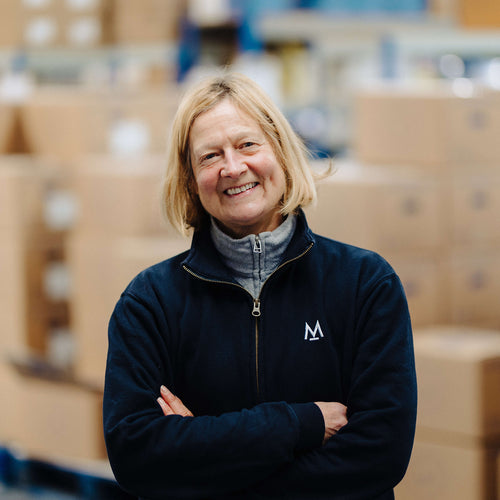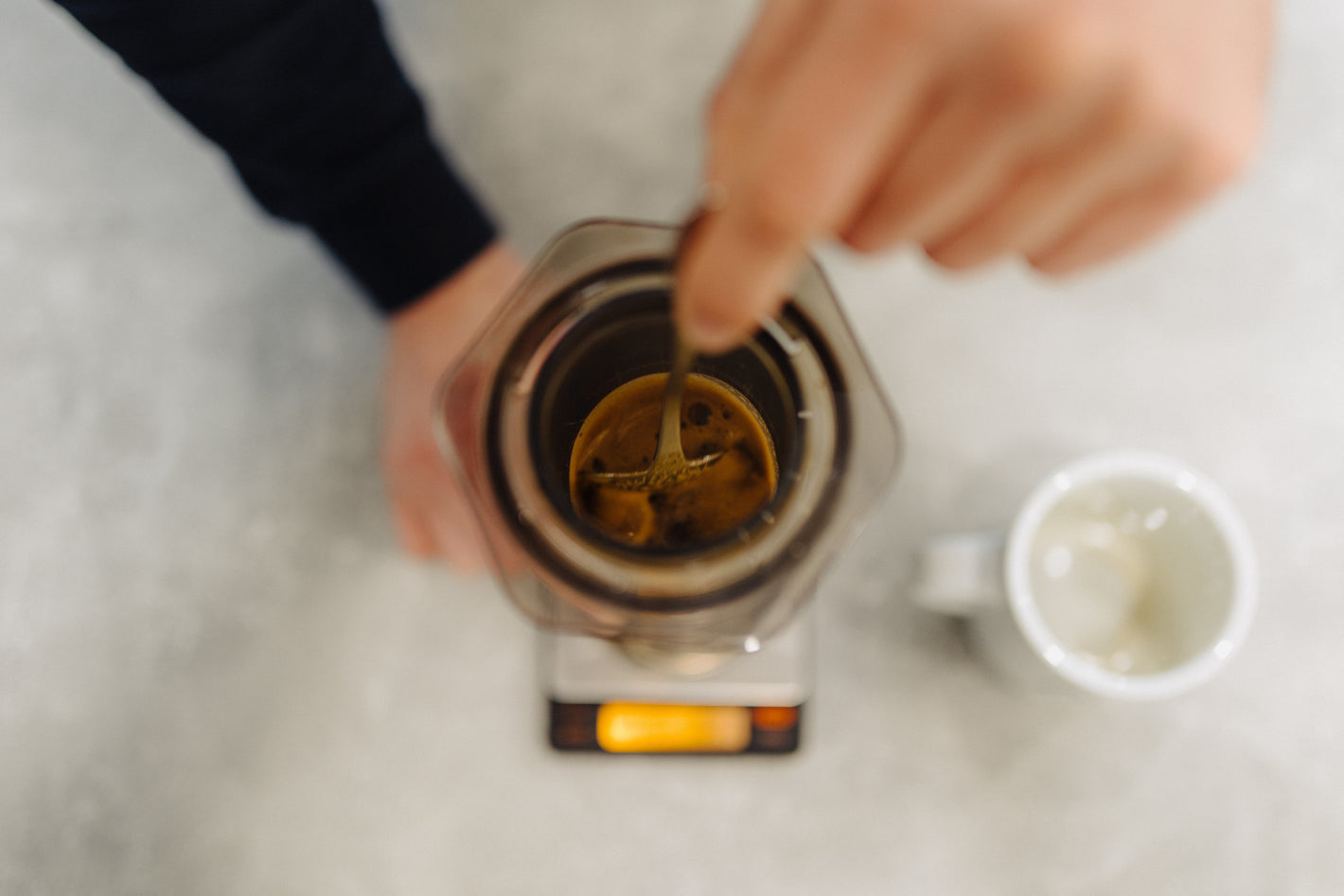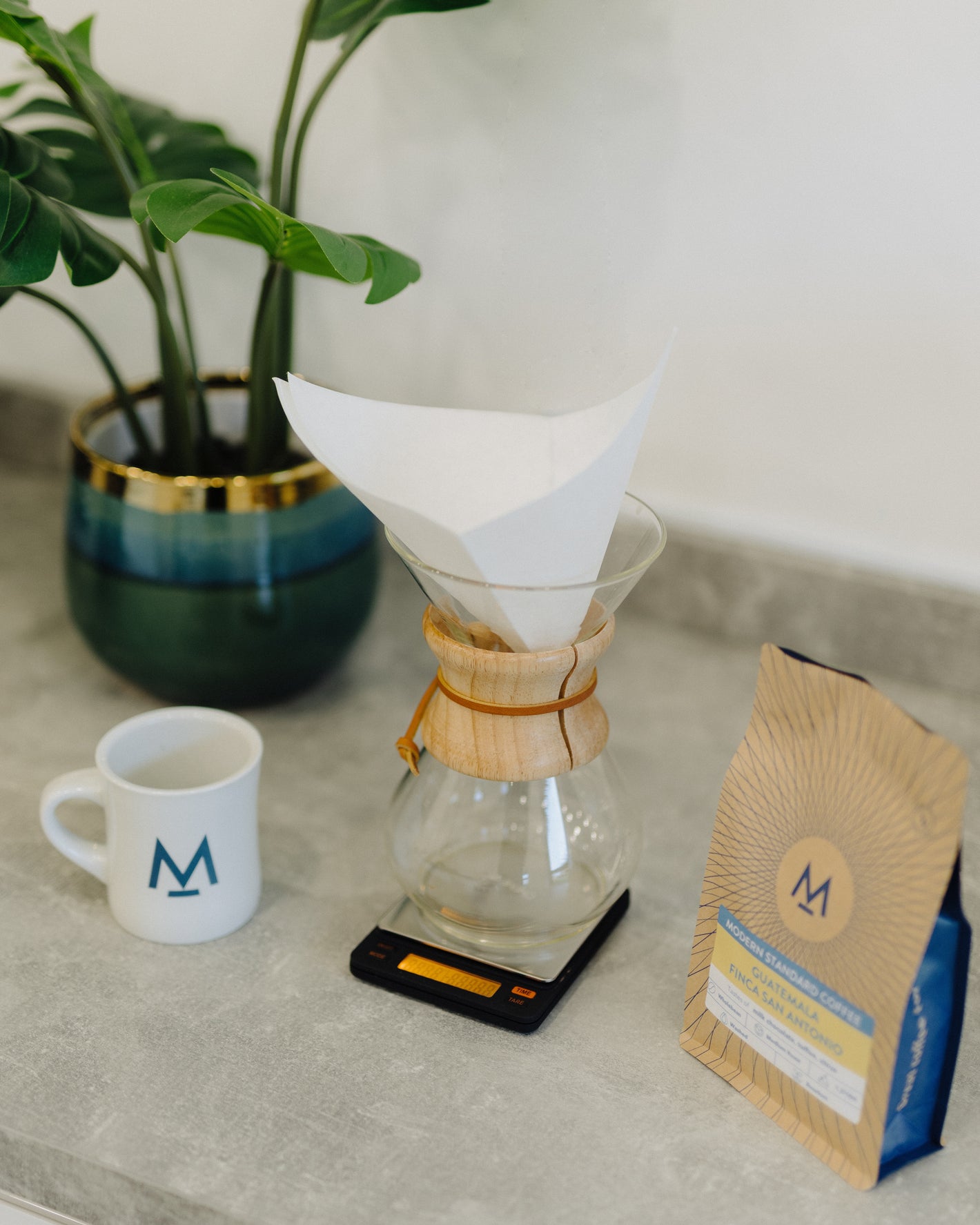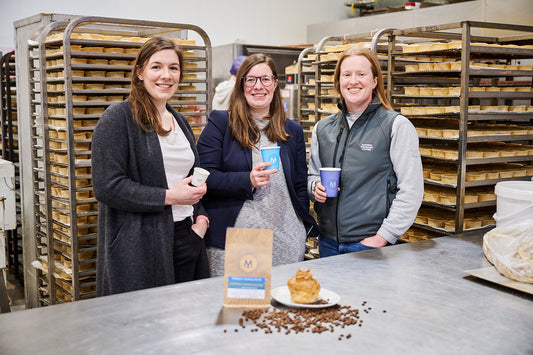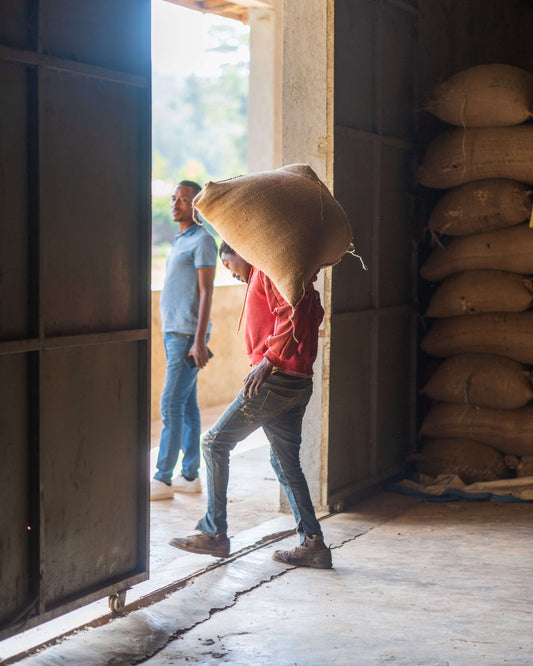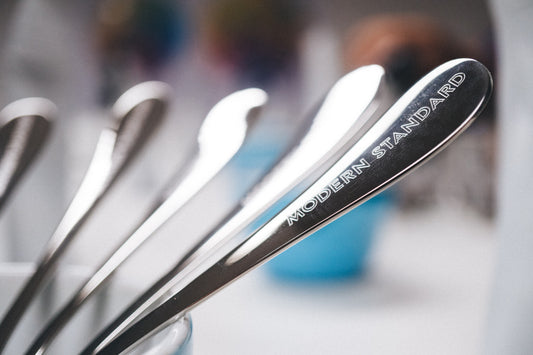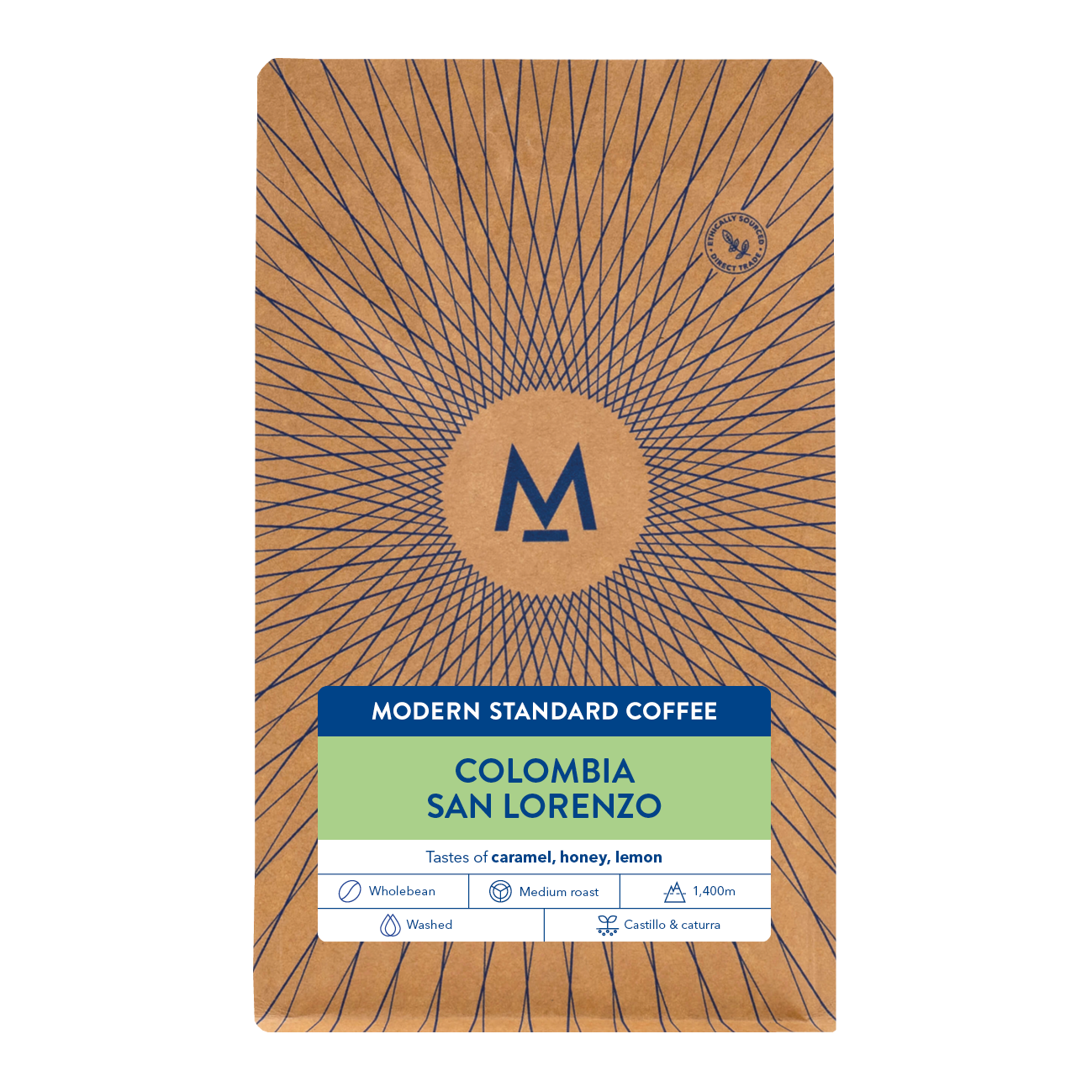
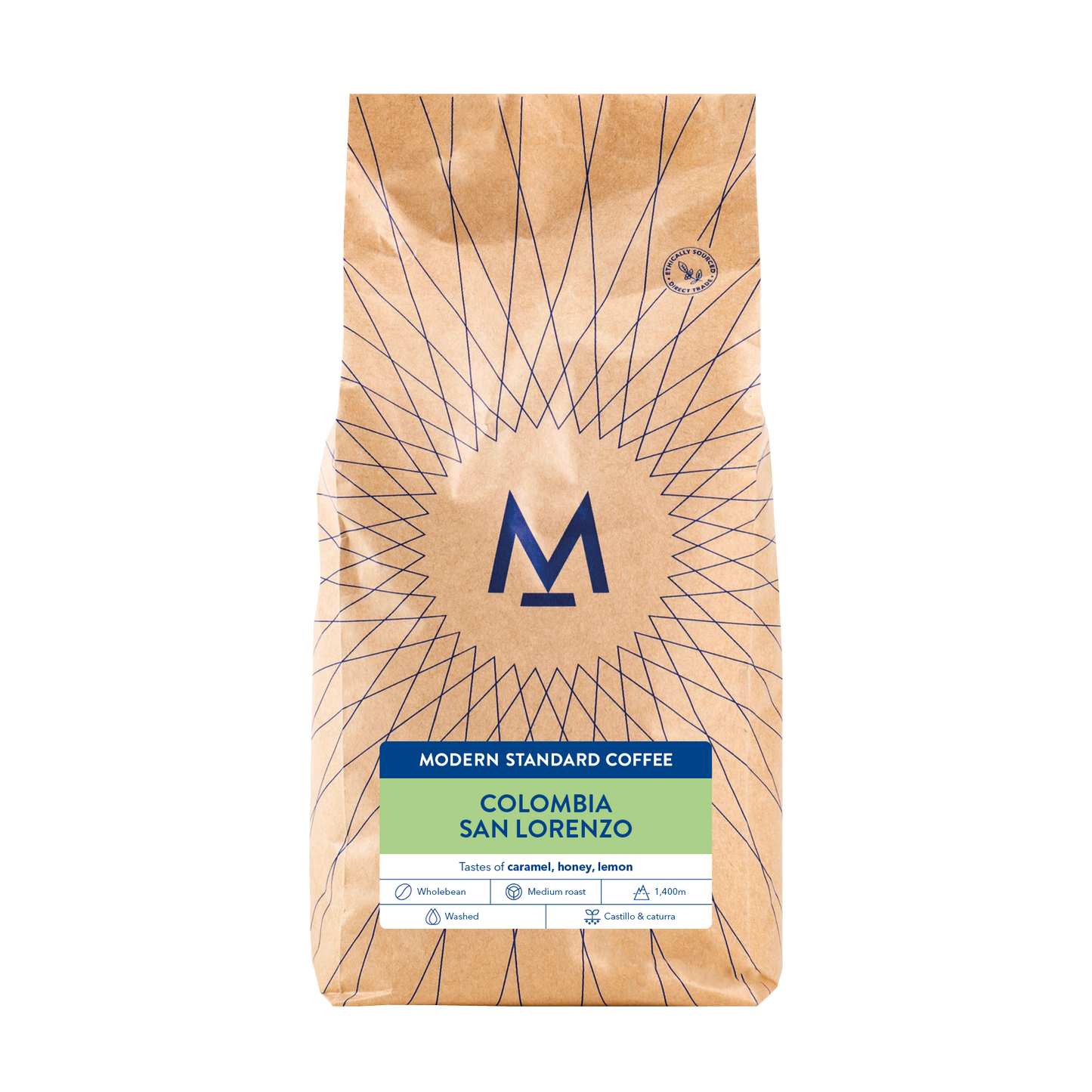
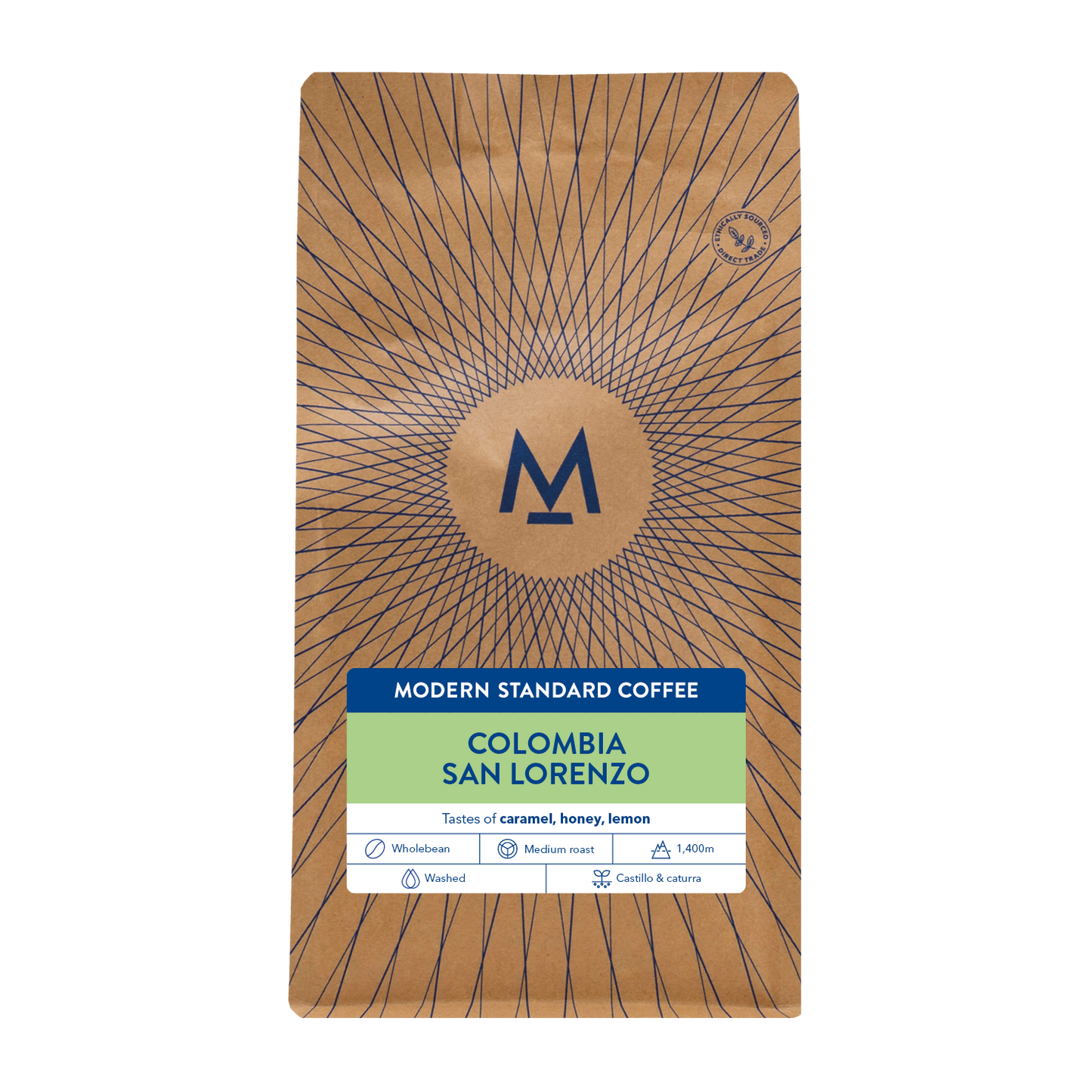
The overview
| Countries of origin | Colombia |
| Producer | San Lorenzo |
| Altitude | 1400 - 1700m |
| Varietal | Castillo, caturra |
| Process | Washed |
The producer
In the 1950s, in the municipality of Riosucio Caldas, as in all Colombian coffee-producing municipalities, coffee farmers were dissatisfied with the exploitation they suffered at the hands of intermediary grain buyers. It was then that a group of coffee farmers, guided by the Cooperative Development Department of the Caldas Departmental Coffee Committee, called 255 farmers to the Constituent Assembly, which was held at the warehouses of the National Federation of Coffee Growers in Riosucio at 10:30 a.m. on June 29, 1963. Founding members included coffee farmers of different social, cultural, and religious backgrounds, some of whom led activities for the benefit of the cooperative.
On March 4, 1964, the Coffee Farmers' Cooperative began providing direct services in Riosucio, including coffee purchase, credit section, and agricultural provision.
Today, it has 2,635 members distributed across 171 villages located in the Department of Caldas in the municipalities of Riosucio, Supia, Marmato, and Quinchía in the Department of Risaralda. The staff consists of 64 employees who work with commitment and dedication to provide appropriate service to all members at the seven purchase points.
The Cooperative is an associative, non-profit, multi-active, limited liability company with a variable and unlimited number of members and social capital, and indefinite duration. It operates under the control of the National Superintendency of Solidarity Economy, and its main office is located in the municipality of Riosucio (Caldas).
Its objective is to efficiently distribute goods or services jointly to meet the needs of its members and the community in general.
The coffee
During harvest season, families and neighbours pick ripe cherries to be sent to the wet mill, where they are floated to remove dirt and any unripe cherries. They go through the pulping and sorting machine before being transferred to fermentation tanks and held for 16-24 hours to remove the mucilage. The coffee is then washed before being spread out on small drying patios, usually on the roofs of houses, to dry. The beans are rotated regularly to ensure drying is even. When the desired moisture level is reached, it is delivered to the cooperative, assessed, dry milled, and prepared for shipment.
Why we love it
When I first started, Colombia was one of the first coffees I tried, and it's buttery aroma and sweetness won me over.
Jennifers's Brew Guide
Out: 31-33g
Time: 24-26s
Water: 305g
Ratio: 1:17
As an espresso, expect bags of caramel and a long sweet finish.
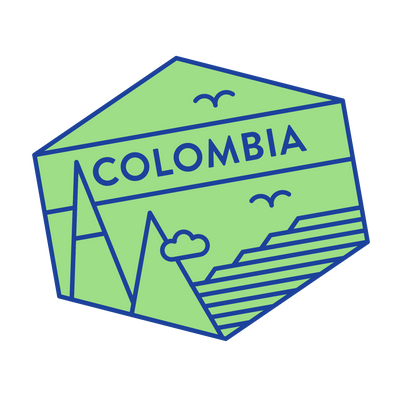
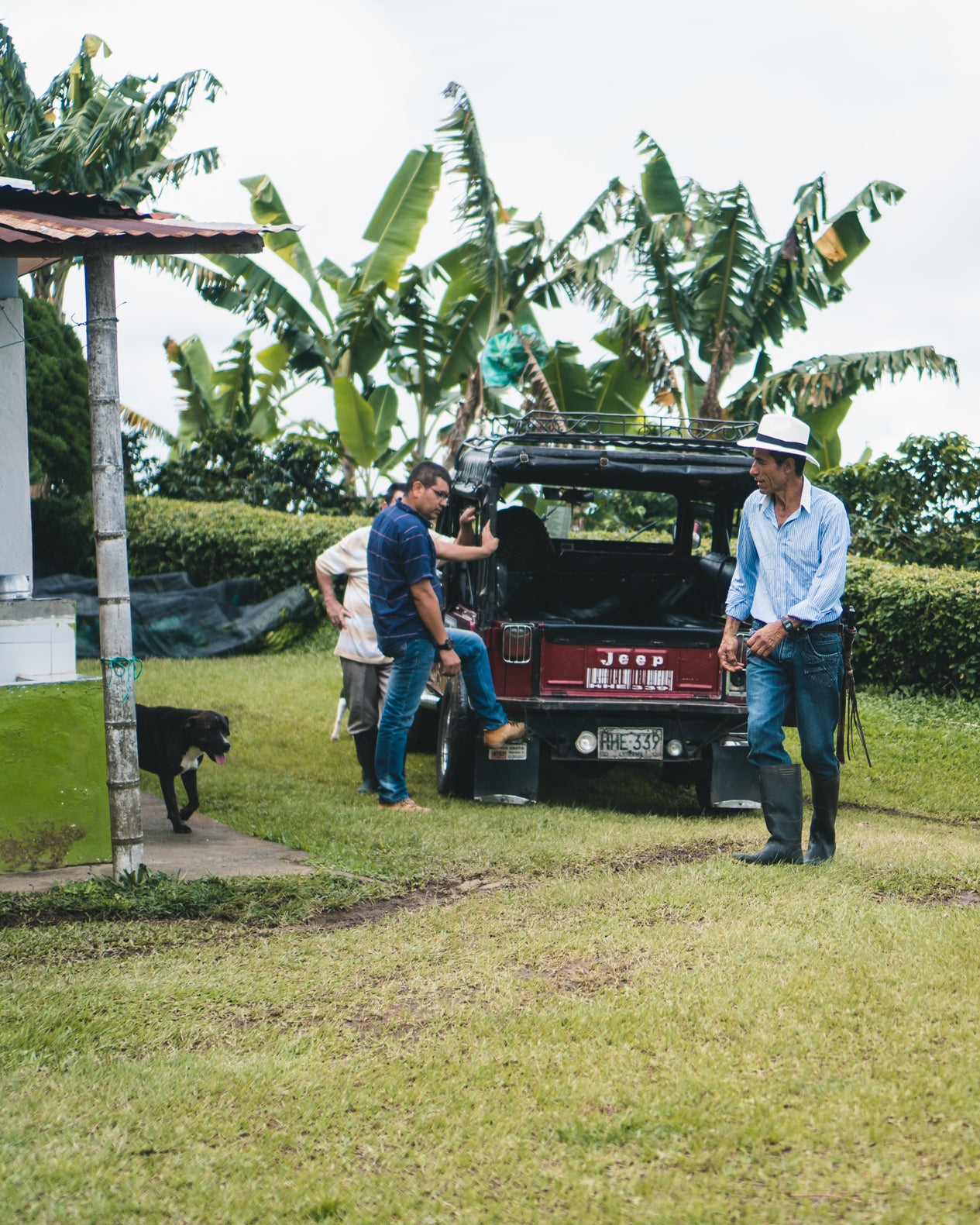
Flavours of Colombia
Colombia boasts a wide range of microclimates and geographic conditions that produce the unique flavors so loved in Colombian coffees. While there are many sub-regions and progressively smaller geographical designations — all the way down to individual farms — broadly speaking, coffees in Colombia can be separated into three major regions whose climate, soils and altitudes affect tastes.
Coffees grown in the north (Magdalena, Santander and Norte de Santander) are usually planted at lower altitudes where temperatures are higher. As such, these coffees tend to have deeper, earthier tastes with a medium acidity, more body and notes of nuts and chocolate.
Coffees coming from the central regions (Caldas, Quindío, Risaralda, North of Valle, Antioquia, Cundinamarca and North of Tolima) are celebrated for their overall balance and their fruity, herbal notes. Flavor variations highlight the specific characteristics of each micro-region.
The southern regions (Cauca, Nariño, Huila and South of Tolima) are prized for producing smooth coffees with high sweetness and citrus notes. They are also known for their medium body and more pronounced acidity.
Another distinguishing feature of Colombian coffee production is the mitaca crop – a second harvest that occurs roughly 6 months after the main crop in most regions. The mitaca crop is a result of moist ocean air rising from both the Pacific and the Caribbean, and the north-to-south orientation of the central cordilleras (mountain ranges).
Colombia’s wide range of climates also means that harvest times can vary significantly. Due to these varying harvest times — and the mitaca crop — fresh crop Colombian coffee is available nearly year-round.
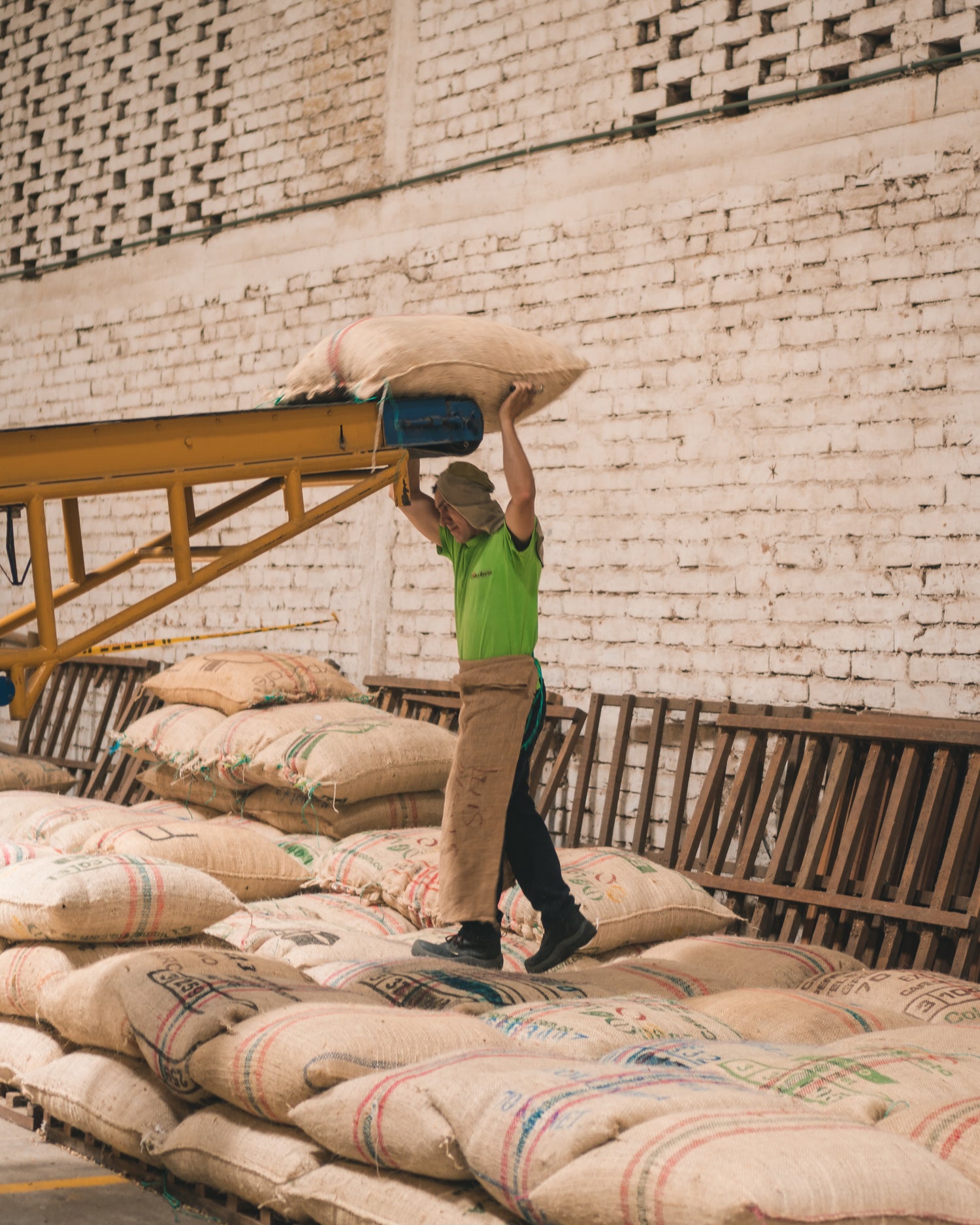
Colombian Coffee
Colombia has been producing and exporting coffees renowned for their full body and bright acidity since the early 19th century. Thanks to its wide range of coffee growing regions, microclimates, and altitudes, Colombia is harvesting throughout the year.
Colombia boasts a wide range of microclimates and geographical conditions that produce the unique flavours so loved in Colombian coffees. While there are many sub-regions and progressively smaller geographical designations—all the way down to individual farms—broadly speaking, coffees in Colombia can be separated into three major regions whose climate, soils and altitudes affect tastes.



